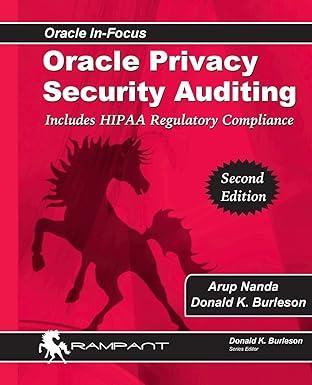Question
The management of Devine Instrument Company is considering the purchase of a new drilling machine, model RoboDril 1010K. According to the specifications and testing results,
The management of Devine Instrument Company is considering the purchase of a new drilling machine, model RoboDril 1010K. According to the specifications and testing results, RoboDril will substantially increase productivity over AccuDril X10, the machine Devine is currently using.
The AccuDril was acquired 8 years ago for $110,000 and is being depreciated using the straight-line method over a 10-year expected life and an estimated salvage value of $30,000. The engineering department expects the AccuDril to keep going for another 3 years after a major overhaul at the end of its expected useful life. The estimated cost for the overhaul is $90,000. The overhauled machine will be depreciated using straight-line depreciation with no salvage value. The overhaul will improve the machines operating efficiency approximately 10% for each of years 3, 4, and 5. No other operating conditions will be affected by the overhaul.
RoboDril 1010K is selling for $220,000. Installing, testing, rearranging, and training will cost another $20,000. The manufacturer is willing to take the AccuDril as a trade-in for $30,000. The RoboDril will be depreciated using the straight-line method. New technology most likely will make RoboDril obsolete to the firm in 5 years.
Variable operating cost for either machine is the same: $10 per machine hour (cash-based). Other pertinent data follow:
| AccuDril X10 | RoboDril 1010K | ||||||
| Units of output (per year) | 10,000 | 10,000 | |||||
| Machine hours | 8,000 | 4,000 | |||||
| Selling price per unit | $ | 100 | $ | 100 | |||
| Variable manufacturing costcash-based | $ | 25 | $ | 25 | |||
| (not including machine hours) | |||||||
| Other annual expenses (tooling and supervising) | $ | 90,000 | $ | 60,000 | |||
| Disposal valuetoday | $ | 35,000 | |||||
| Disposal valuein 5 years | $ | 0 | $ | 40,000 | |||
Devine Instrument Companys weighted-average cost of capital (WACC) is 8%, and it is in the 40% tax bracket. Use the PV factors (Appendix C, Table 1) for calculating the NPV of each decision alternative.
Step by Step Solution
There are 3 Steps involved in it
Step: 1

Get Instant Access to Expert-Tailored Solutions
See step-by-step solutions with expert insights and AI powered tools for academic success
Step: 2

Step: 3

Ace Your Homework with AI
Get the answers you need in no time with our AI-driven, step-by-step assistance
Get Started


